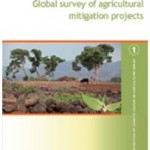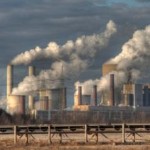 Boulder, Colorado – Climate change is fundamentally affecting weather patterns, creating an environment in which extreme weather events such as heat waves, heavy downpours, and droughts are likely to be more frequent and more severe.
Boulder, Colorado – Climate change is fundamentally affecting weather patterns, creating an environment in which extreme weather events such as heat waves, heavy downpours, and droughts are likely to be more frequent and more severe.
“Current Extreme Weather and Climate Change”, released on September 7 by Climate Communication and reviewed by leading climatologists, finds that many types of extreme events are occurring more frequently and the ties to human-induced climate change are clear. The report summarizes recent peer-reviewed scientific literature detailing the connections between climate change and extreme weather events.
“There is now a pervasive human influence in all climate events,” said Kevin Trenberth, Distinguished Senior Scientist at the National Center for Atmospheric Research. “Although sometimes small, this can be the straw that breaks the camel’s back.
Heat Waves
Heat waves are more frequent, they are hotter, and they last longer. Twice as many heat records are being broken as cold records in the United States.
“Small global average temperature rise leads to big changes in extreme weather,” said Jerry Meehl, Senior Scientist at the National Center for Atmospheric Research. “As a result, we’re now seeing extreme heat events that were once rare occurring more frequently. Continued emissions of heat-trapping gases will lead to even more frequent and intense heat extremes.”
Precipitation, Flooding and Droughts
As a result of global warming, rain increasingly falls in heavy downpours. Warmer air holds more water vapor, so when a storm system moves through, that extra water dumps out as heavy rain. Between these downpours, there are longer periods without rain. As a result, a cycle of droughts and floods can occur.
“Sustained heavy precipitation leads to the types of floods we’ve seen in recent years in Pakistan, Australia, and the Mississippi,” said Kevin Trenberth of the National Center for Atmospheric Research.
At the same time, dry areas are becoming drier, due to lack of precipitation coupled with increased evaporation that is associated with higher temperatures. Across the globe, very dry areas have doubled in size since the 1970s.
Hurricanes
The intensity of Atlantic hurricanes has increased in recent years, a pattern that is consistent with human-induced climate change. Warmer oceans drive stronger storms, and this pattern is expected to continue in future decades. “By the end of this century, climate models suggest we may see an 80 percent increase in the number of Category 4 and 5 hurricanes,” said Jeff Masters, Director of Meteorology at Weather Underground.
About Climate Communication
Climate Communication is a non-profit project dedicated to improving public understanding of climate change science. For more information, visit http://climatecommunication.org.
Source: Climate Communication.
Related Features:














